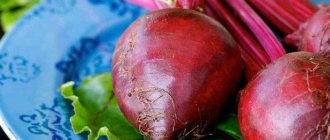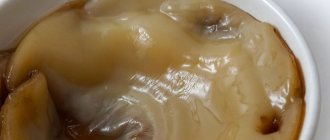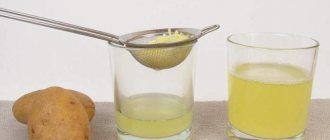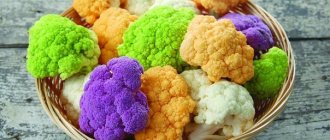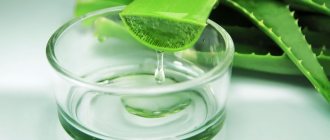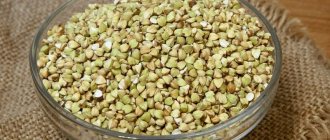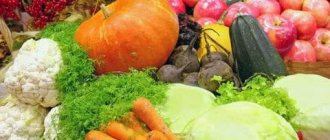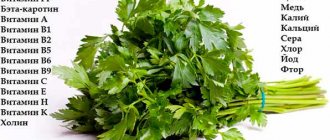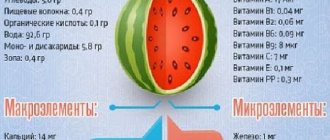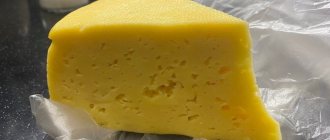Vegetable juices are much more valuable and healthier than fruit juices. Their influence on the body is limitless, and the benefits of their use exceed the wildest expectations. Recently, freshly squeezed juices from beets, carrots, potatoes and cabbage have become popular. These fresh juices help fight various diseases, improve the condition of skin and hair, and nourish the body with useful microelements and valuable vitamins. But in order for the treatment to give a positive result, you need to know how to properly prepare such drinks and how to consume them. After all, the wrong approach may not bring the long-awaited effect; Moreover, if they are used when contraindicated, this may cause unforeseen consequences. Therefore, it is important to understand the benefits and harms of certain vegetable juices.
Everyone knows about the healing properties of cabbage, but hardly anyone realizes that the juice squeezed from its leaves is much healthier and more valuable. The thing is that it contains the same substances necessary for the body as the vegetable itself, only they are absorbed much faster and better. So why is this natural product useful and what harm can it cause to the body, read further in the article.
Is it possible to drink cabbage juice if you have gastritis?
People suffering from gastritis are not recommended to eat fresh cabbage, as a large amount of fiber irritates the gastric mucosa and increases pain. But its juice, which retains all the valuable qualities of the vegetable itself, can be consumed by those diagnosed with low acidity of gastric juice.
Did you know? It has been proven that gastritis is often infectious in nature and is caused by specific bacteria. You can become infected through household contact - through poorly washed cutlery and even through a deep kiss.
Moreover, it is used in the treatment of this type of gastritis, as it can relieve inflammation of the gastric mucosa. It also helps to cope with nausea and heartburn, which quite often accompany this disease, especially during an exacerbation.
If a person with high acidity drinks cabbage juice, the stomach will activate hydrochloric acid production, which will only worsen the disease. In such cases, use of the product is allowed only during remission, in small quantities and in the absence of allergic reactions to cabbage.
Principles of nutrition for peptic ulcer disease
Gastroenterologist, Gastroenterology Department No. 1
Korzhenevskaya N.G.
An ulcer is a disease that leads to deterioration in the functioning of the digestive system as a whole. During an illness, you should carefully consider your diet, since eating even seemingly healthy foods can worsen the patient’s condition. Therapy of gastric and duodenal ulcers is a complex process, one of the main parts of which is nutritious nutrition, which consists of a balanced meal intake throughout the entire period of the disease. Strictly limiting the patient’s diet to “allowed” and “forbidden” foods increases the chances of recovery and accelerates the scarring of ulcers.
The main goal of nutrition for an ulcer is to normalize the digestion process and accelerate the regeneration of the mucous membrane that lines the stomach by sparing the injured organ.
Basic principles of therapeutic nutrition for peptic ulcer disease (diet No. 1):
- Creating the greatest peace of the mucous membrane of the stomach and duodenum.
- Exclusion of products with a strong juice effect.
- All food is given pureed.
- Inadmissibility of introducing large volumes of food at one time.
- Frequent and small meals.
- Avoiding food that is too cold or too hot (not lower than 15 °C and not higher than 65 °C).
- Limit table salt to 10-12 g per day.
- High nutritional value of the diet (proteins, fats, carbohydrates, mineral salts, vitamins A, B, C). Chemical composition of the anti-ulcer diet: 100 g of proteins, 100-110 g of fats, 400-450 g of carbohydrates. The calorie content of the diet is 3000-3200 kcal.
- You need to eat small amounts of food 4-6 times a day. The last meal is immediately before bed (preferably 1 glass of milk).
Healthy foods:
- white wheat bread, baked the previous day or dried (400 g per day), as well as in the form of crackers; sponge cake, savory cookies;
- cereal milk soups, pureed, milk soups with the addition of pureed vegetables (cabbage excluded), milk soups with chopped vermicelli or homemade noodles;
- eggs - soft-boiled or in the form of a steam omelet, no more than 3 eggs per day;
- milk and dairy products - cream, fresh non-acidic sour cream, fresh non-acidic cottage cheese;
- poultry meat dishes (low-fat meat - beef, veal, chicken and free from tendons and fat) are prepared boiled and steamed (cutlets, meatballs, soufflé, puree, roll) and non-tough boiled meat is periodically allowed;
- fish dishes - various low-fat varieties of fish, preferably river fish (pike, perch), boiled, steamed, chopped;
- dishes and side dishes of vegetables - potatoes, carrots, beets, pumpkins, white zucchini in puree, steamed puddings without crust;
- dishes and side dishes from cereals and pasta - semolina, buckwheat, oatmeal, pearl barley, rice;
- semi-liquid porridge, cooked in water, with the addition of milk;
- fats - butter (15-20 pure and 20-25 g for cooking), vegetable oil (25-30 g); the total amount of fat per day should not exceed 110 g;
- berries - sweet varieties (strawberries, raspberries, wild strawberries); fruits - soft, sweet and non-astringent varieties, boiled, mashed or baked;
- sweet dishes (cream, jelly, jelly, pureed compotes from sweet varieties of berries and fruits); vitamins in non-acidic berries, juices, rose hip and wheat bran decoctions.
Prohibited products:
- Primary boiled meat and fish broths and prepared soups from them;
- Any dishes made from any mushrooms;
- Okroshka and cabbage soup;
- Any fatty meat and fish are prohibited, this also includes lard and caviar;
- Smoked products, most sausages (sometimes, during the recovery stage, you are allowed to eat a little boiled sausage or ham);
- Canned products, as well as pates;
- Dairy products with acid, such as kefir;
- Fatty dairy products: condensed and whole milk, cream and cheeses;
- Hard-boiled eggs, as well as scrambled eggs (soft-boiled eggs are allowed);
- Among the cereal dishes prohibited are pearl barley, wild rice and corn, as well as bran granules and muesli;
- Vegetables that contain fiber that is difficult to digest: radishes, radishes, white cabbage, turnips, peas, beans, rutabaga;
- It is worth limiting the consumption of cucumbers and tomatoes, as well as tomato paste;
- Products of plant origin that can irritate the mucous membrane of the damaged organ: sorrel and rhubarb, garlic and onions;
- Berries and fruits with acid: gooseberries, figs, grapes, currants, lemons, oranges, limes, tangerines, pineapples;
- Nuts, dried fruits and apricots are prohibited;
- Any hot, salty and spicy sauces: mustard, horseradish, ketchup, vinegar;
- Ice cream and chocolate;
- Strongly brewed drinks (teas, cocoa, coffee), all carbonated drinks, alcoholic drinks;
- Rye bread, pastries
Medicinal products
Despite the wide range of foods and drinks approved for consumption for stomach ulcers, among them there are those that have a healing effect. They support the body during such a critical period and actively fight the bacterium Helicobacter Pylori, which causes erosions on the mucous membrane of the organ.
These include:
- Milk has the property of enveloping the walls of the stomach, preventing other, more aggressive products and gastric juice from damaging its walls. Doctors strongly recommend that all patients with stomach ulcers drink milk with a low fat content, as this will speed up the wound healing process. In addition, after ingesting milk, patients most often experience dull or completely stop the pain caused by the ulcerative process.
- Honey is the next, no less useful product for peptic ulcers, which must be consumed daily in reasonable quantities. Thanks to the microelements and vitamins it contains, it has a beneficial effect on the entire gastrointestinal tract. If there is an ulcer, honey relieves inflammation, coats the walls of the stomach, and reduces irritation from the mucous membrane of the organ. In addition, honey can neutralize the effect of hydrochloric acid, reduce its secretion, and relieve pain. This beekeeping product will also help with symptoms that often accompany stomach ulcers, such as nausea and heartburn, and will also increase the level of hemoglobin in the blood, which serves as the prevention of anemia.
- Cabbage juice. It is the juice that has a healing effect, but only in fresh form. It contains a stable type of ascorbic acid and anti-ulcer vitamin U. It is the juice that fights the main culprits in the development of ulcers - Helicobacter pylori - and has a beneficial effect on the process of wound scarring. However, for dietary nutrition, it is best to use cauliflower inflorescences.
The main condition that you must observe when organizing nutrition for a stomach ulcer is a positive mood and an unshakable belief in recovery from the disease. Only the combination of the above factors will help cope with the problem.
“Eat right and be healthy!”
Chemical composition
This drink has a rich composition of vitamins, macro- and microelements:
- B vitamins;
- vitamins C, E, PP, D, K, U;
- beta-carotene - 0.06 mg;
- calcium - 48 mg;
- chlorine - 37 mg;
- sodium - 13 mg;
- potassium - 300 mg;
- magnesium - 16 mg;
- phosphorus - 31 mg;
- sulfur - 37 mg;
- iron - 0.6 mg;
- iodine - 3 mcg;
- manganese - 0.17 mg;
- fluorine - 10 mcg;
- aluminum - 570 mcg;
- boron - 200 mcg;
- cobalt - 3 mcg;
- copper - 80 mcg;
- molybdenum - 10 mcg;
- nickel - 15 mcg;
- selenium - 0.3 mcg;
- chromium - 5 mcg;
- zinc - 0.4 mg.
All these elements are irreplaceable in the process of human life. Moreover, in cabbage juice they are in a form that is easily absorbed by the body.
It is worth especially noting that the vegetable contains methylmethionine (vitamin U), which promotes healing of the mucous surface of the digestive system. What makes the product especially valuable for people with gastritis with low acidity or peptic ulcer disease.
Traditional medicine recipes
For gastritis
Cabbage juice can help get rid of gastritis with low acidity. You need to take this remedy 250 ml 2-3 times a day an hour before meals [7].
For ulcerative colitis, cholangitis and chronic hepatitis
Treatment with freshly squeezed cabbage juice for such diseases comes down to drinking 125 ml of the drink three times a day before meals.
For duodenal and gastric ulcers
For such an illness, you need to drink only freshly squeezed juice, 125 ml (gradually increasing the dose to 250 ml) three times a day, about half an hour before meals. The course of treatment is 30 days. You can take it again no earlier than six months later [8].
For pancreatitis
For pancreatitis, sauerkraut juice is the best remedy. For effective treatment, you need to ferment the vegetable without adding carrots and various spices. You need to take 50 ml of juice twenty minutes before meals up to five times a day. This treatment will help normalize blood glucose levels and also relieve pain in the pancreas.
For mastopathy
The use of cabbage juice for mastopathy helps reduce the risk of nodules degenerating into a malignant tumor. A freshly prepared drink should be consumed on an empty stomach, 125 ml half an hour before meals.
For gastric erosion
For this disease, you should only take freshly squeezed cabbage juice. It is drunk warm, 125 ml twice a day, an hour before the main meal.
For swelling
To get rid of puffiness, you need to drink a quarter glass of juice three times a day before meals.
For wounds and burns
Cabbage juice can be used as a medicine for wounds and burns due to its wound-healing properties. To do this, you need to mix it with yolk in a 1:1 ratio and lubricate the affected areas of the skin with this mixture.
For sore throat
To get rid of a sore throat, it is customary to use a slightly warmed drink. It should be diluted with water in a 1:1 ratio and gargled several times a day. The antimicrobial effect of the juice will manifest itself the very next day after treatment.
Against cough
To thin mucus and remove it from the body, it is recommended to mix half a glass of cabbage juice with fresh juice obtained from one black radish, adding 2 tbsp. l. honey The prepared mixture should be taken two tablespoons half an hour before meals [9].
For constipation
If you drink cabbage juice every day, you can forever forget about such a problem as constipation. This product effectively cleanses the intestines of toxins and waste, thereby helping to improve digestion and normalize the functioning of the gastrointestinal tract.
For vitamin deficiency
Vodka is often added to cabbage juice for medicinal purposes. For example, for vitamin deficiency, the following cocktail will be useful: mix 100 g of cabbage juice with 50 g of carrot juice, the same amount of fresh apple juice and onion juice. Add 30 g of vodka and 15 g of honey to the resulting mixture. It is recommended to take the medicine one tablespoon three times a day.
Properties of cabbage juice for the human body
A product can not only benefit the human body, but also have a negative effect on it.
Benefit
All the valuable properties of this vegetable remain in cabbage juice; moreover, they become more “concentrated”. Thus, regular consumption of this drink will help quickly and effectively replenish the body with the necessary vitamins and minerals.
Read more about the beneficial properties and contraindications for drinking cabbage juice.
- Useful properties of the product:
- vitamin C or ascorbic acid increases the body’s resistance to infectious diseases;
- vitamin K has a beneficial effect on blood clotting and is involved in bone formation;
- vitamin U relieves pain from ulcerative lesions of the digestive organs, promotes healing and restoration of cells of mucous surfaces;
- iron is involved in the processes of hematopoiesis and the supply of tissues and organs with oxygen;
- copper, iodine and sulfur have a beneficial effect on the skin, hair and nails;
- tartronic acid prevents the transition of “fast” carbohydrates into fat reserves;
- the product gives a feeling of fullness, reducing appetite and helping to lose excess weight;
- improves the process of digesting food, helps cope with constipation and remove waste and toxins from the body;
- improves the functioning of the respiratory system; in combination with honey, it dilutes and removes phlegm from the body;
- reduces pain during sore throat, promotes rapid healing of wounds, inflammation and burns;
- helps reduce blood pressure and helps remove bad cholesterol;
- has a beneficial effect on kidney function, normalizes water balance in the body;
- calms the nervous system, normalizes sleep, improves performance;
- Masks made from cabbage juice increase skin tone, remove flaking and reduce age spots.
Harm and contraindications
Even the most useful product can cause harm if it is abused or contraindications are ignored. Taking too much juice may cause colic and bloating.
- Also in some cases it is completely contraindicated. This:
- inflammation of the intestines (enterocolitis);
- inflammation of the pancreas (pancreatitis);
- increased stomach acidity;
- spasms and acute inflammation of the intestines and gallbladder;
- acute kidney diseases (urolithiasis, nephritis);
- previous myocardial infarction;
- recent surgery;
- allergic reactions to vegetables.
Important! To reduce the negative impact of this drink, you should add milk or yogurt to it. A combination of cabbage juice and carrot juice can prevent increased gas formation.
Since this drink provokes increased gas formation, it can negatively affect a woman during pregnancy. Increased pressure in the intestines increases the tone of the uterus and causes the risk of premature birth.
Also, you should not give the drink to children under 1 year old, since their digestive system is not yet mature enough. For the same reason, the product is not recommended to be included in the diet of a nursing mother, so as not to cause problems with the intestines of the baby.
The effect of cabbage juice on various types of gastritis
As a result of drinking the juice of raw white cabbage with hyperacid gastritis, the secretion of gastric juice is activated. And given its increased acidity, the negative effect on mucous surfaces increases, and the size of the inflamed areas of the epithelium grows even more.
As a result, food is less digested, fermentation increases, and, as a result, symptoms of heartburn, belching, nausea and general discomfort become more pronounced.
With anacid gastritis , when low acidity is noted, the drink helps to cope with inflammation of the gastric mucosa and manifestations of the disease - pain, nausea, heartburn.
Cauliflower juice is especially useful, since it has a high content of methylmethionine, which heals wounds on the epithelium. And Beijing, in turn, helps to cope with constipation and improve the general condition of the body.
Consumption standards
People with gastritis are recommended to drink this drink 3 times a day before meals. In this case, a single dose is 0.5 cups, and the time before meals is 20–30 minutes. It is important to note that the drink is consumed warm, so as not to cause irritation to the gastrointestinal tract.
Important! It is better to start taking it with 2-3 spoons per day. This will ensure that the body responds well to the product.
Treatment continues for at least 7 days. If there is no improvement within this time, you should definitely consult a specialist. The same recommendation applies to the situation if the body’s condition worsens while consuming the product.
Conclusion
Nature has taken care of medicines for the human body. Fresh cabbage juice is an effective natural remedy that helps alleviate the condition of a patient with gastritis (low acidity) and even stomach ulcers. But treatment with cabbage juice will be effective only if you follow a strict diet: excluding fried, pickled, smoked, salty and spicy foods.
Preparing a drink from cabbage will not be difficult; it is important to take the drink correctly: before meals, no more than a glass at a time, 3 times a day. Moreover, it is better to drink freshly squeezed juice, which has lost its beneficial properties. If you follow the recommendations, relief comes within a few days: pain and heaviness in the stomach go away, heartburn disappears.
If you like sauerkraut, brine will help cope with the disease. All vitamins and nutrients are preserved in the product.
How to use cabbage juice correctly for gastritis
You should only use a freshly prepared drink, since if you prepare it for future use, most of the beneficial properties will disappear within a few hours.
The taste of the drink can be improved by adding other vegetable or fruit juices. So, it goes well with carrot, beet or apple juice. However, it is necessary to take into account that the additional component will also have an effect on the body.
Important! If pure juice causes slight discomfort, you can dilute it with clean water. Salt and other seasonings should not be used.
How and where is the best way to store cabbage juice?
It is better to drink the drink immediately after preparation, since the longer it is stored, the less valuable substances remain in it. However, if there is a need to prepare several servings at once, they should be stored in the refrigerator in a clean glass container.
The product can remain in such conditions for 1–2 days, and the maximum amount of beneficial substances remains in the drink for about 5 hours.
Nature has given man many products that not only satiate, but also help cope with ailments. Proper treatment with cabbage juice is a natural and safe way to relieve exacerbation of gastritis with low acidity. Discuss this issue with your doctor, follow all recommendations and be healthy!
Brine – sauerkraut juice
When fermented, cabbage produces abundant juice with lactic and acetic acids. The lack of fiber ensures a gentle effect on the stomach. Indications for use are similar to those of fresh juice. Brine will help with gastritis with acidity below normal during calm periods (in case of high acidity, it is better to avoid cabbage brine). Heart disease and hypertension are added to the contraindications - the brine contains salt and spices.
You need to drink, starting with 1-2 spoons, gradually increasing the intake to 1/2 cup, over the course of a month. A few drops of lemon won't hurt.
If consuming sauerkraut brine causes unpleasant symptoms, it is better to forget about the product until you recover.
